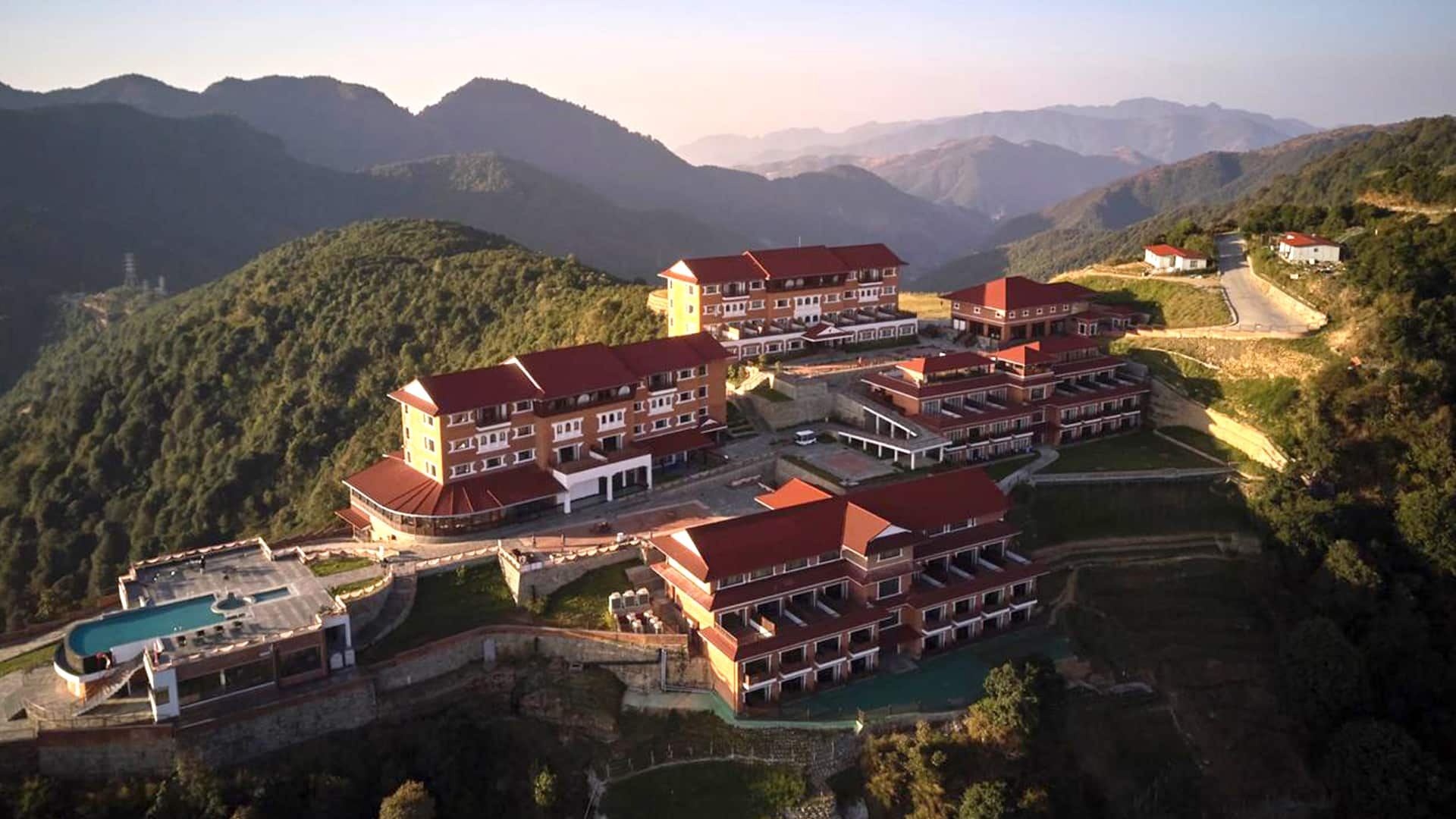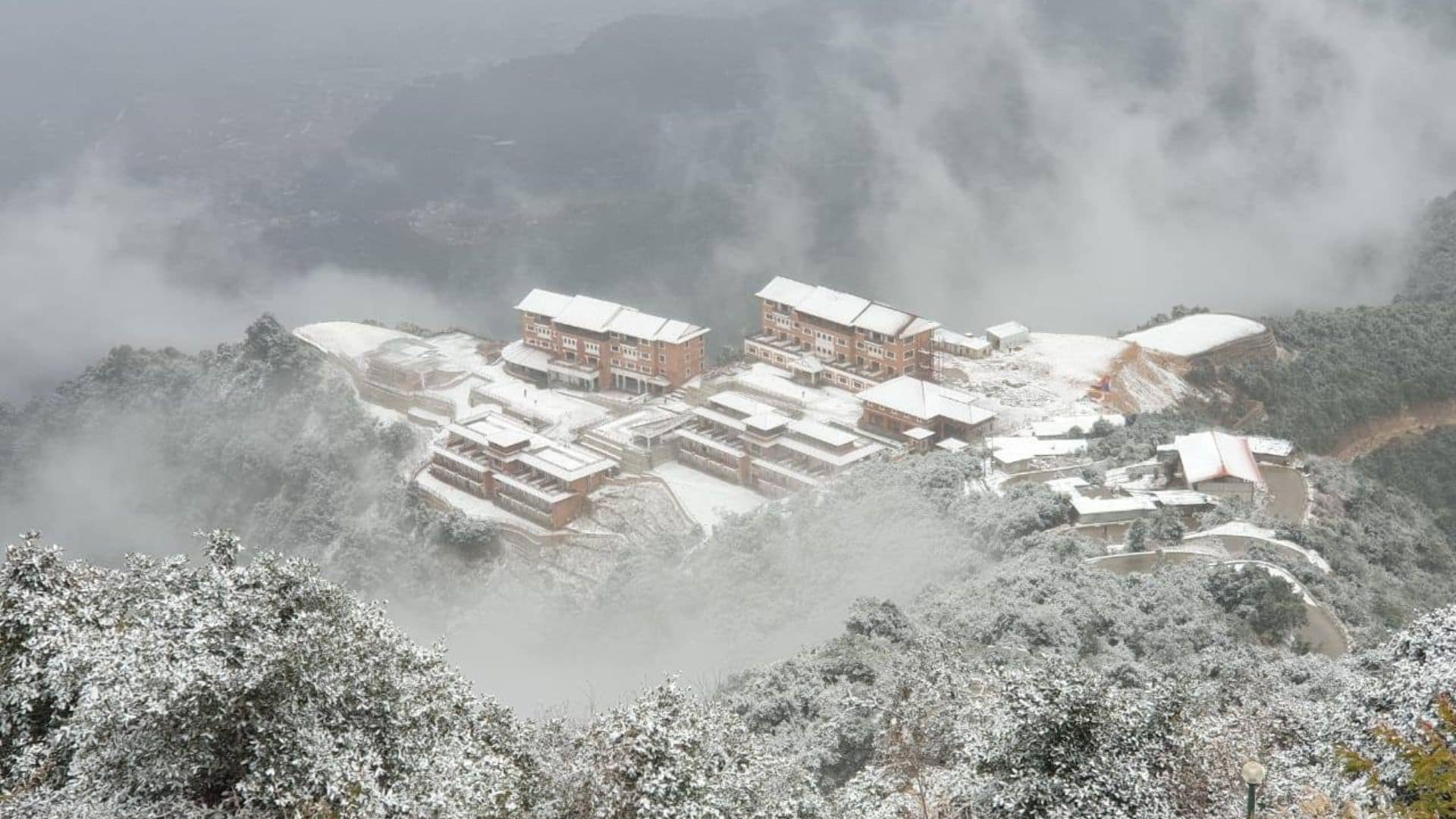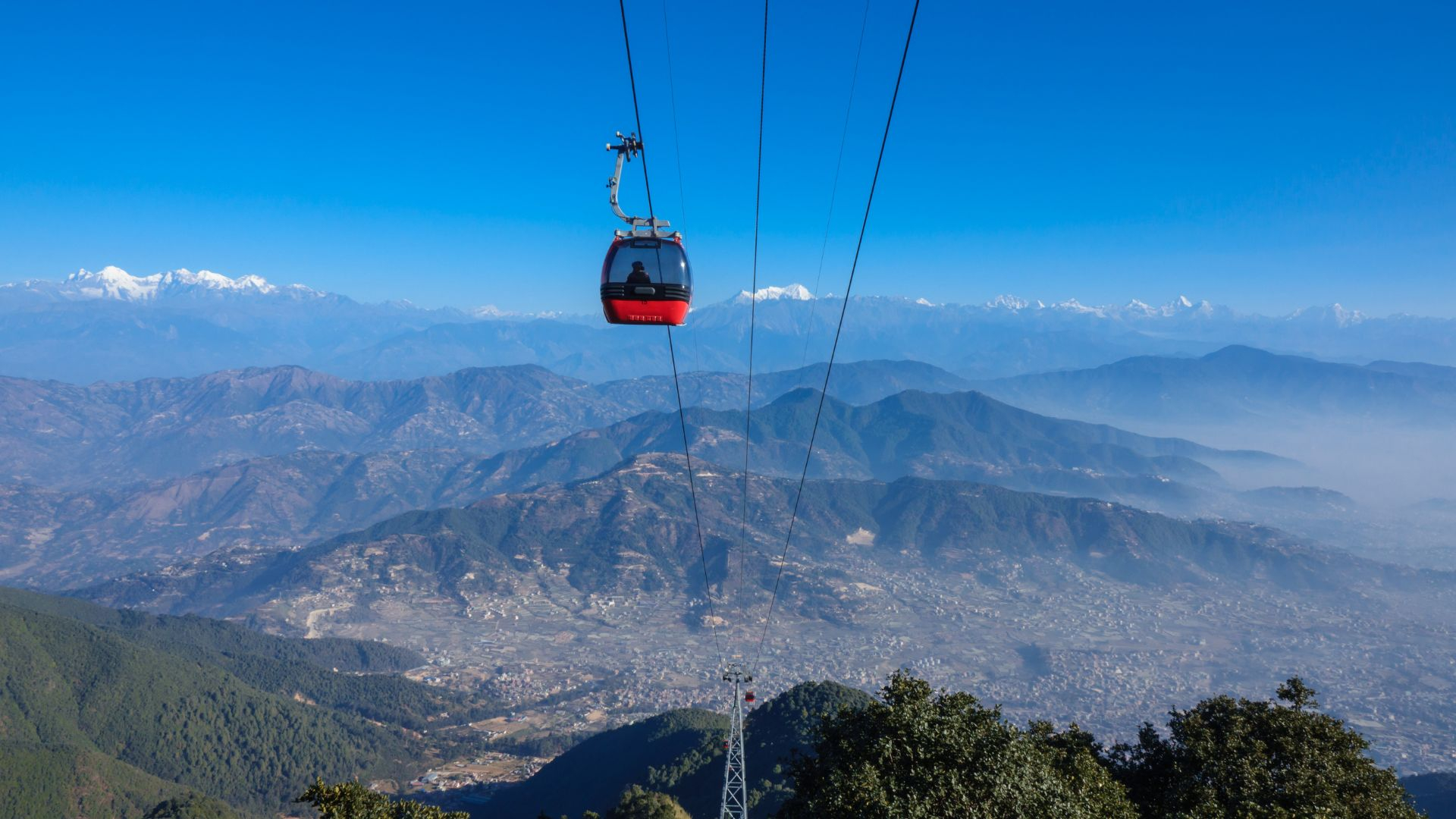
Top 6 Heritages for Sightseeing in Kathmandu
February 13, 2024
Located on the foothills of the great Himalayan range, the Kathmandu Valley for long has been known for its cultural and historic significance. Home to three main cities, namely Kathmandu, Patan, and Bhaktapur, the valley flaunts intricate craftsmanship and artistry of the Newa people — its natives, in the ancient temples, stupas and durbar squares. In addition, religious sites such as Pashupatinath, Boudhanath, and Swayambhunath hold significant spiritual value.
As you explore every corner of these historical sites, you will discover a place where history is not only maintained on paper, but is found living and breathing in every structure, art and culture of the Kathmandu Valley.
Top Heritage Sites to visit in Kathmandu
1. Pashupatinath Temple

Situated on the banks of the sacred Bagmati River in Kathmandu, the Pashupatinath Temple is one of the most religious Hindu sites in the world. The temple complex houses many interesting sites such as the Kali temple, Guhyeshwari temple and the cremation ghats. The main temple itself is built in a pagoda style with a gold gajur or pinnacle, featuring four ornately decorated silver doors. The temple houses the main lingam, a phallic symbol of Lord Shiva. Devotees offer prayers to it, seeking blessings from Lord Shiva. Entrance into the main temple is prohibited and offering pooja (usually consisting of flowers, fruits and incense is carried out by the priests.
What to know:
- Entry into the main temple complex is prohibited for foreigners.
- The temple complex is open to devotees from 5am to 12pm and 5pm to 7pm.
- All four doors are opened only during special festivals.
- It sees a sea of crowds during festivals like Shivaratri, Teej, and the month of Shrawan (July to August).
What not to miss:
- Do not miss Sandhya Aarati, a pious prayer offered everyday from around 6 or 7 pm. Held on banks of the Bagmati river on the eastern side of the Pashupati Temple, the 1.5 hours is a visual and spiritual treat. Witness priests offer prayer of butter lamp lights to Lord Shiva accompanied by Vedic chants and music. It is a mesmerizing sight to behold and one that can be experienced by everyone.
- Another sight to behold is the Hindu cremation ceremony. Considered holy, the ghats of Bagmati River next to Pashupatinath is a preferred by many for the last rites of their departed loved ones.
2. Swayambhunath Stupa

Perched on a hillock west of Kathmandu, Swayambhunath Stupa is one of the holiest Buddhist sites in the valley. Swayambhu, meaning “self-existent one”, is centered on a gleaming white dome and spire on the hilltop. The stupa is said to have been built where a divine lotus was seen when the Kathmandu Valley was still a primordial lake over 2,000 years ago.
The complex houses countless shrines, temples and prayer wheels devoted to Buddhist and Hindu deities. But getting on top isn’t easy. A steep climb of 365 stone steps leads to the top from where you can enjoy the pristine panoramic views of Kathmandu on a clear day. The site itself sees pilgrims circumambulate the stupa at all hours.
What to know:
- Swayambhunath is also known as the Monkey Temple and for a good reason. The place is filled with monkeys and they are notorious for stealing food from visitors, so be careful and stay vigilant.
- The West entry gate has a water fountain and you will see many people throwing coins into it. Breaking news: It is not a wishing fountain and honestly, you are just wasting money. Skip it.
What not to miss:
- Manjushree temple is a lesser-known temple located northwest of the Swayambhunath’s West entry gate. Don’t miss out on it.
- Almost every morning, a lady sells homemade roti (flatbread) and aalu sandeko (spiced potatoes) at the West entry gate of Swayambhunath. She brings it in a doko (a bamboo basket) and serves it on paper plates. Delicious!
3. Kathmandu Durbar Square

Kathmandu Durbar Square, also known as Basantapur Durbar Square or Hanuman Dhoka Durbar Square is a Unesco World Heritage Site. The palace square built by Malla kings is home to the main palace complex surrounded by intricately carved Hindu and Buddhist temples. Now a bustling bazaar dotted with coffee shops and rooftop cafes, the square also hosts some of the biggest festivals of Kathmandu such as Indra Jatra, truly reflecting the rich Newa cultural heritage.
The main palace complex was used for coronation ceremonies for Shah kings until their reign ended in 2008. The balcony of the palace is still used by ministers and dignitaries while observing important festivities in the square.
What to know:
- Foreigners are required to pay an entry fee to the square that also includes a visit to the Hanuman Dhoka Palace Museum.
- The square is best visited in the early morning when the city is still just waking up. It is peaceful to observe the locals going about their daily lives.
What not to miss:
- Not too far away from the durbar square lies Ason, a traditional market which still remains largely intact and active. Explore it.
- The Kumari Ghar, where the Living Goddess Kumari resides is one of the key attractions of Kathmandu Durbar Square. Locals can pay their respect to the Kumari as early as 9am and receive her blessing. Unfortunately, foreigners are only allowed until the first courtyard to admire its architecture.
- If you are in the valley during autumn, you don’t want to miss the Indra Jatra. The 8-day long festival takes place sometime between August and September in Kathmandu Durbar Square and its vicinity. There are many celebrations during the festival which sees masked dances of lakhey and pulu kisi, and chariot procession of the Kumari.
4. Boudhanath Stupa

The towering Boudhanath stupa, constructed after 600 AD, remains one of Nepal’s most graceful Buddhist monuments. According to legend, the Tibetan king Songtsen Gampo built the shrine as atonement for wrongdoing. The original stupa was damaged by invaders, and the current edifice dates to a more recent rebuilding.
With its whitewashed dome, gilded spire and Buddha eyes, Boudhanath is perfectly proportioned. Its design symbolizes the stages toward enlightenment. Pilgrims perform ritual kora circles around the base, adorned with 108 images of Amitabha and prayer wheels. The circular market that surrounds the huge Chorten is well-known for its wide range of Tibetan art, crafts, and cuisine.
What to know:
- The best time to visit Boudhanath is during mornings and evenings, for the peaceful ambiance.
- Explore the alleys around the Boudha Stupa to discover hidden cafes that serve authentic Tibetan dishes.
- When circumambulating the stupa, always walk clockwise, keeping the stupa to your right.
What not to miss:
- Boudha is a tantalizing gateway to savoring authentic Tibetan and Sherpa cuisine. Try Keema Noodles at Khawa Karpo Tasty Noodle Factory or Paoz (big momo).
- The Guru Lhakhang Monastery is within the Boudhanath periphery, right opposite the steps of the stupa. It offers a great view of the stupa and itself features stunning Tibetan artwork on its walls.
5. Patan Durbar Square

Like Kathmandu Durbar Square, the durbar square in Patan was built by Malla kings and was the main palace square of Malla King of Patan. Located in the heart of Patan City, the Unesco Heritage Site epitomizes the city’s mastery of Newari architecture. The square is dotted with temples and palace buildings flaunting intricate woodwork, stone sculptures and metalwork. Its many temples also makes the square a religious and spiritual destination for many. The expansive Patan Durbar Museum within the square is another not-to-miss attraction.
What to know:
- Foreigners are required to pay an entry fee to the square that also includes a visit to the Patan Durbar Museum.
- The square is home to Manga: Hiti, a traditional stone water spout, which is considered to be the oldest working water spout on record. It was built in 570 AD.
- Unlike many religious spaces, the magnificent Bhimsen Temple is accessible for all, including foreigners. Marvel at the terrific life-size statue of the Hindu deity, Bhimsen and the intricate woodwork of the temple.
What not to miss:
- Experience the vibrant Rato Machindranath Jatra which usually falls between May and July. The festival usually lasts a couple of weeks and involves boisterous chariot pulling, hymns, and traditional dance and music.
- Honacha is a famous Newari eatery located within the square right behind the famous “Krishna Mandir”. The three generations old eatery serves authentic Newari food like bara, kachila, chhoila, chatamari etc.
6. Bhaktapur Durbar Square

Similar to the two other durbar squares in the valley, Bhaktapur Durbar Square used to be the main town square in Bhaktapur during the rule of Malla kings. The largest square among the three, this Unesco Heritage Site is also considered to have the best collection of medieval art that takes you back to an era of cultural opulence.
The most iconic palace in the square is the 55-window palace. The intricately carved wooden lattice-windows are worth being admired. Take a tour of the palace itself which is now an art museum. The square is sprinkled with many other popular monuments and temples, giving a sneak-peek into the yesteryear glory. Nearby are other popular squares, mainly Taumadhi Square that houses the famous five-storied Nyatapola. Pottery Square, as its name suggests, is known for pottery work.
What to know:
- Foreigners are required to pay an entry fee to the square that also includes a visit to the 55-window Palace Museum.
- Pottery Square is a great place to see traditional pottery making in action. You can also try your hands on it for a couple hundred rupees. Do ask for the price before you try it out to avoid being ripped off.
- The adjacent alleys are filled with antique stores, painting galleries and shops selling handicrafts. It is a great place for souvenir shopping.
What not to miss:
- It is criminal to not try Juju Dhau, the King of Yogurt when in Bhaktapur. The yogurt is a local treat and was initially prepared specially for the kings.
- The alley adjacent to Nyatapola Temple houses a small nameless Newari eatery run by an elderly lady. She makes some delicious bara served with potato and gram stew. You don’t want to miss it.
Staying at Chandragiri Hills Resort for the best Sightseeing Experience in Kathmandu
If you are in Kathmandu Valley for a couple of days to explore the city and experience the best it has to offer, then there is no better place to stay over than at Chandragiri Hills Resort. Equipped with all necessary amenities to make your stay comfortable and luxurious, the resort makes for an excellent retreat.
Located just a short drive from Kathmandu City, yet in a peaceful, secluded hilltop you can easily explore all heritage sites listed above and more without having to worry about rushing back to your accommodation. The hilltop resort is accessible on a 10-min long cable car ride. Furthermore, its location offers a breathtaking panoramic view of Kathmandu Valley surrounded by mountain peaks along with recreational activities like zipline and wall climbing. Guests get the best of all Nepal has to offer — access to rich culture and heritage of the valley and stunning mountain views.








